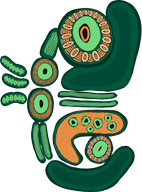
Understanding Your Child’s Tooth Eruption Stages
There’s a lot of information about teething, and it can be helpful to know what is typical when it comes to your child’s tooth eruption. Teething is a normal developmental stage which happens throughout childhood. Although every child is an individual, for most, there is a typical pattern of tooth eruption and loss, also called shedding.
From around the age of 6 months until 3 years, children will usually have all 20 of their baby teeth. These are also called primary, milk or deciduous teeth, and they’re just as precious as the adult teeth, which start forming in the gums many years before they erupt.
Tooth eruption ages and stages
- From around 6 years of age, kids start to lose their baby teeth. The roots are absorbed as the adult teeth start to push their way into the gums.
- Generally, the last of the baby teeth have fallen out by around 12 years of age and are eventually replaced by 32 adult teeth.
- The last teeth to erupt are the third molars, also known as the wisdom teeth. These usually appear in late adolescence. Wisdom teeth can create problems, especially if there’s not enough room in the jaw for them to erupt properly. Overcrowding and impaction can cause pain as well as changes in the correct position of the other teeth. Regular dental check-ups are important throughout all stages of life, so your dentist can keep an eye on any issues that may arise.
It’s common for children to have gaps between their teeth as individual teeth are lost and the spaces are eventually filled with permanent teeth.
Each tooth has a name
- Every tooth plays an important role. Some teeth are designed for biting – these are called the incisors (front teeth) and are positioned in the front of the mouth. Incisors can be central – in the middle, or lateral, at the side. Incisors come together like scissors to cut food as it goes into the mouth.
- The canines are the pointy teeth which sit beside the lateral incisors, they’re designed for biting and tearing food.
- Pre-molars have flat surfaces to crush food. Molars are for grinding and chewing food so it can soften and is then safe to swallow.
Ideally, the teeth on the top and bottom of the mouth work together; this helps with chewing, speaking, and even breathing. The resting position of your child’s teeth can be an important indicator of their general oral health. This is one of the many features of your child’s teeth which the dentist will check during regular examinations.
Order of tooth eruption
- The first teeth to erupt are the lower central incisors, followed by the upper central incisors.
- The lateral incisors come next and are positioned on either side of the front teeth.
- The first molars come next, followed by the canines and finally, the second molars.
Some children experience multiple tooth eruptions at the same time, and others have several months between new teeth emerging. There can be significant variation around the timing and order of tooth eruption.
When should I take my child to see a dentist?
The general recommendation is to see a dentist by 1 year of age, no matter how many teeth a child has. Many parents start taking their baby along with them for their own appointments, which can help to build confidence and normalise oral care practices. The Child Dental Benefits Schedule (CDBS) covers part of the cost of some basic dental services for eligible children.
Speak with your dentist about the correct way to brush and floss your baby’s teeth. Get your baby used to having their mouth, tongue and gums cleaned even before their very first tooth has erupted. It can also help to make tooth brushing fun. Book an appointment today to talk with your dentist about maintaining good oral health routines.
https://orthodonticsaustralia.org.au/how-are-teeth-supposed-to-rest/
https://www.betterhealth.vic.gov.au/health/conditionsandtreatments/teeth-development-in-children
https://www.healthdirect.gov.au/baby-teeth
https://www.teeth.org.au/media/seue2hxd/ada2022-factsheet-tooth-eruption.pdf
